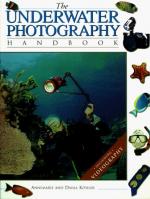|
This section contains 381 words (approx. 2 pages at 300 words per page) |
English engineer and amateur photographer William Thompson devised the first method of taking underwater photographs in 1856. As he watched a swollen river sweep beneath a bridge during a rainstorm, he wondered how photography might be used to assess the damage if the bridge actually collapsed and divers descended to examine it. Accordingly, he and a friend constructed a watertight container in which to place a camera, covering one end of the box with plate glass. Over this they fit a wooden shutter raised and lowered by a string, focused the lens, and loaded a dry collodion plate into the camera. Thompson then rowed into Weymouth Bay and lowered the device to a depth of 18 ft. (5.5 m), pulled the shutter, and left his creation underwater for ten minutes. Unfortunately, the container yielded to pressure, and the camera filled with water. Thompson did obtain a faint image of the bay bottom, submitting it to the Society of Arts in London as the first underwater photograph.
In l893 Louis Boutan, a French professor of zoology, went underwater in a diving suit and used a magazine camera adapted with a fixed-focus lens and holding six gelatin dry plates; he fitted his modification into a watertight metal container. By means of levers he could release the shutter and change the plates, but the device was cumbersome. Boutan also developed the precursor of the magnesium flash bulb, later supplanted by more sophisticated underwater lighting methods.
American Charles William Beebe (1877-1962) took the first underwater photographs at extreme depths in l935 when he descended nearly 3,000 ft. (900 m) to take photographs through the porthole of a bathyscaphe--a submersible ship used in deep-sea exploration and featuring a watertight cabin. Ten years later American geophysicist Maurice Ewing (1906-1974) devised the first automatic underwater camera, used chiefly for photographing deep-water geological structures.
In 1989, Kodak introduced the Weekend 35, a disposable camera housed in a clear plastic body that made it waterproof. The camera could be submerged up to 12 feet (3.7 m). Two years later, Nikon introduced the first 35mm single-lens reflex underwater camera which featured an aluminum alloy body, the Nikonos RS. This camera could be submerged up to 328 feet (1000 m), without having to be housed in a bulky sealed package. With these innovations, anyone could take photographs under water.
|
This section contains 381 words (approx. 2 pages at 300 words per page) |


